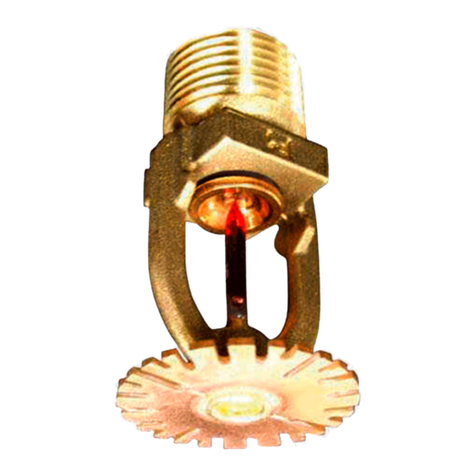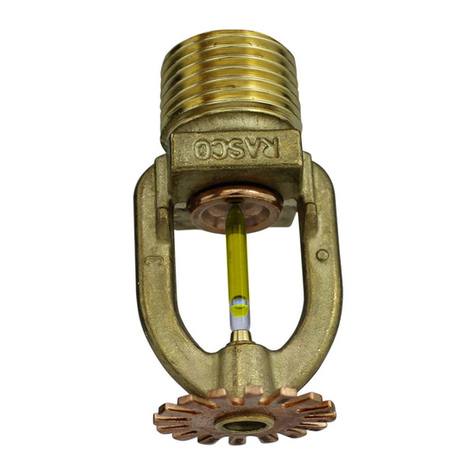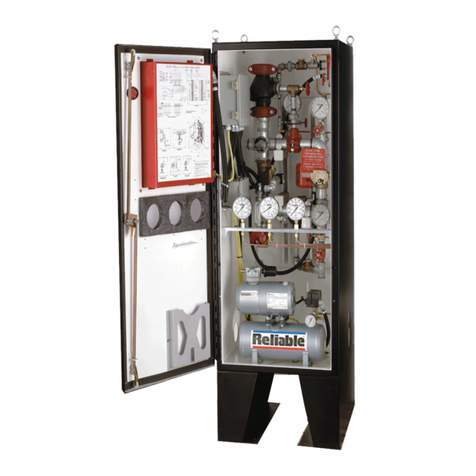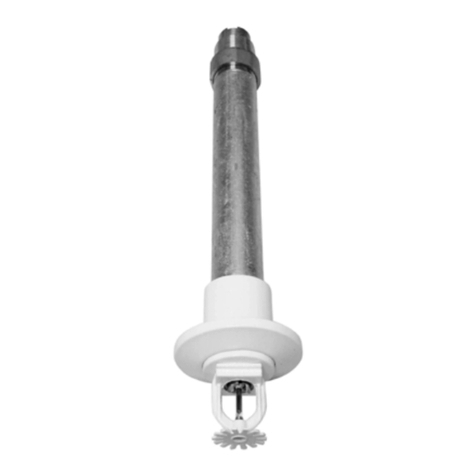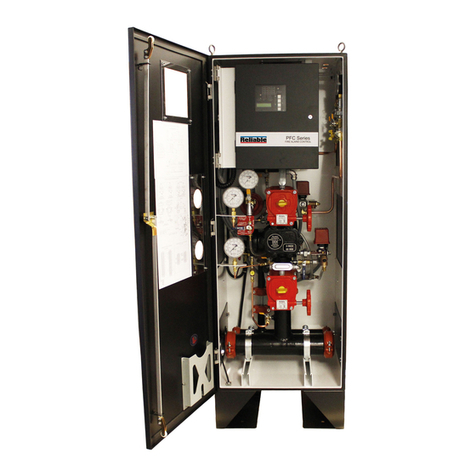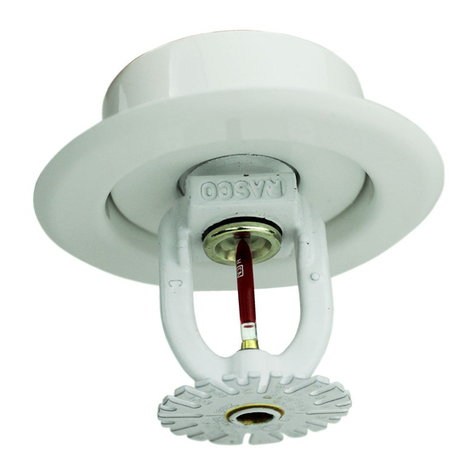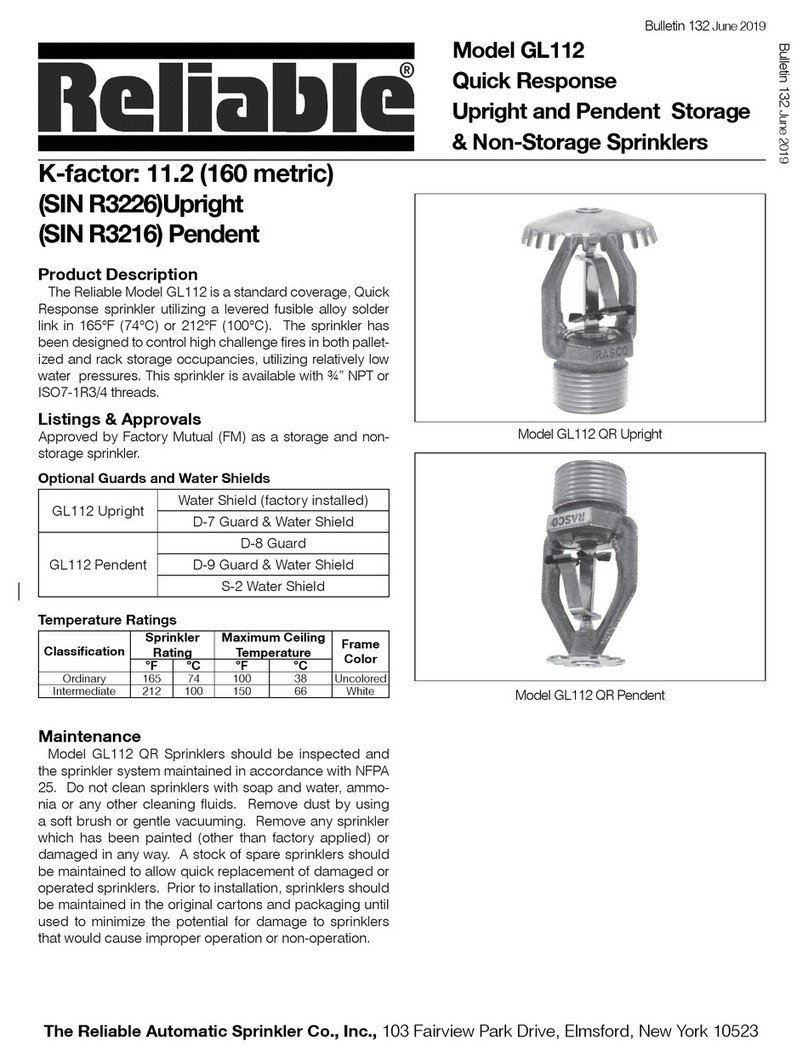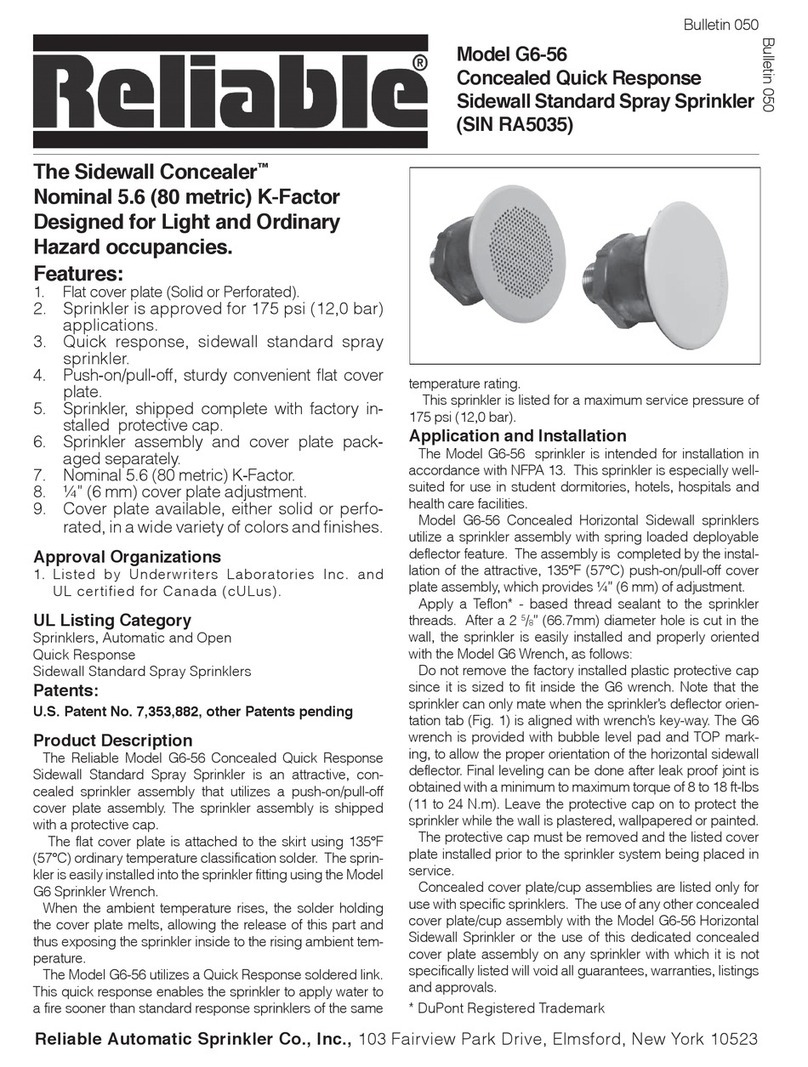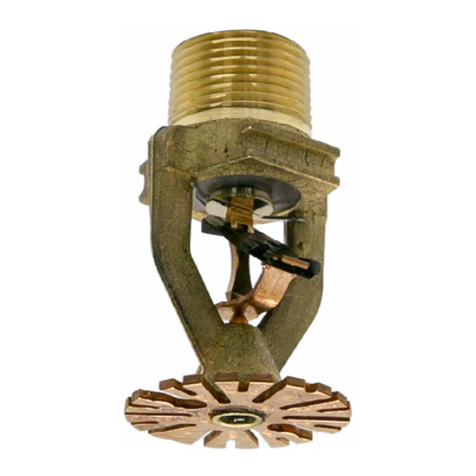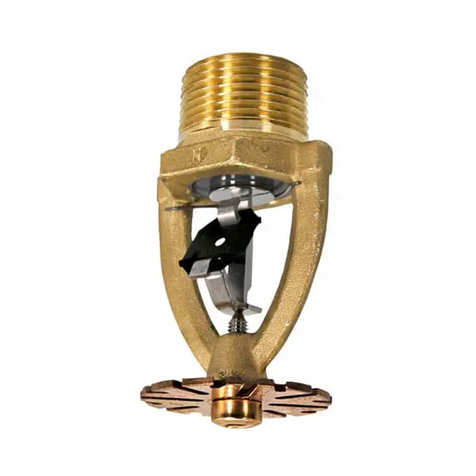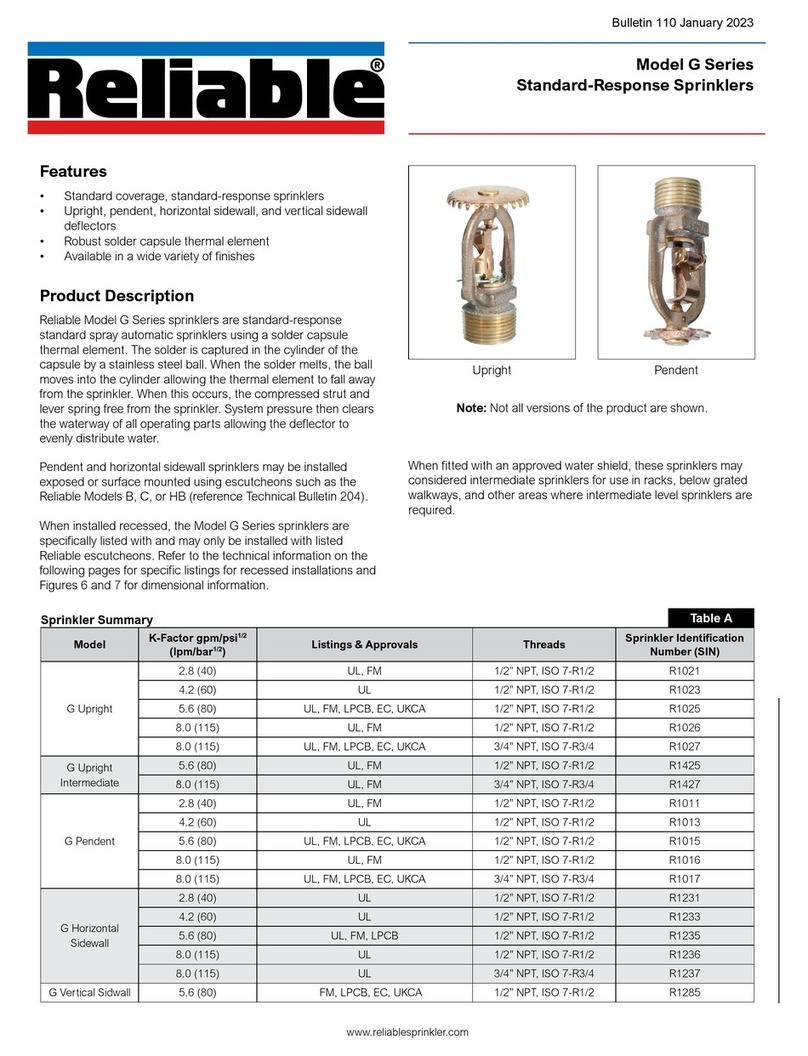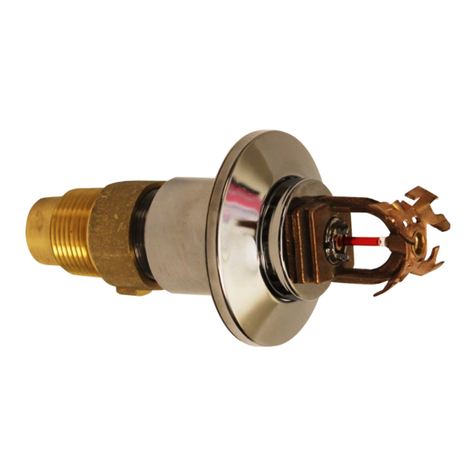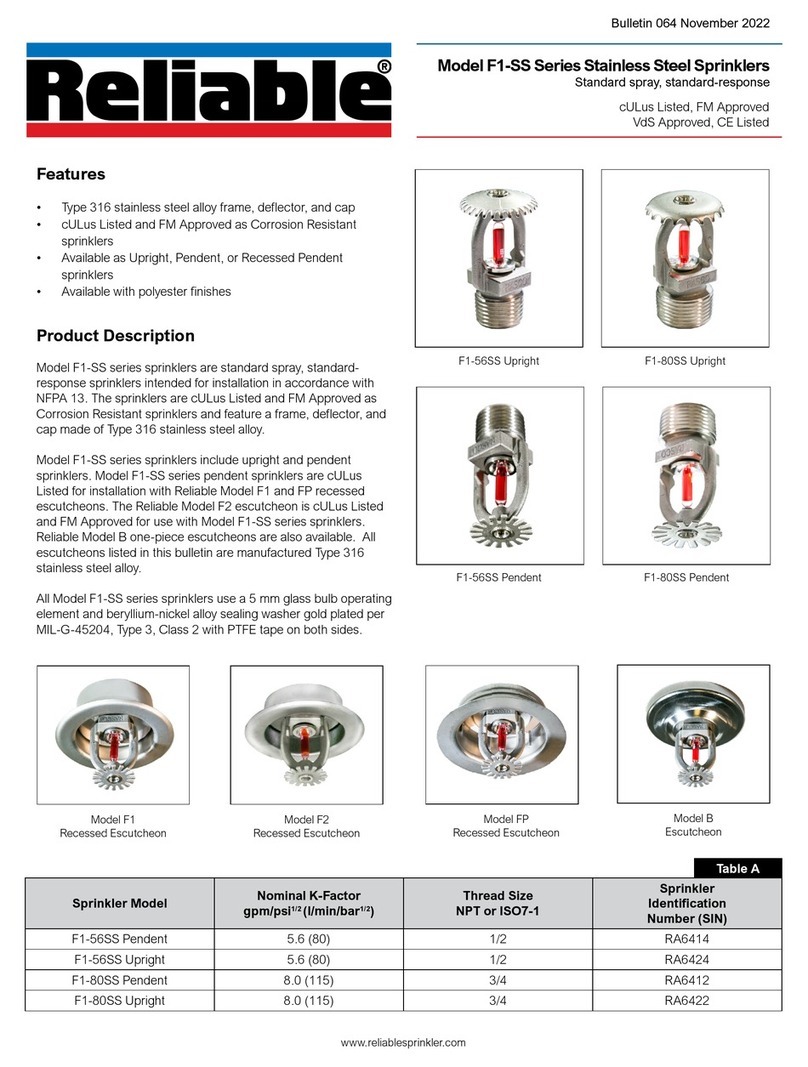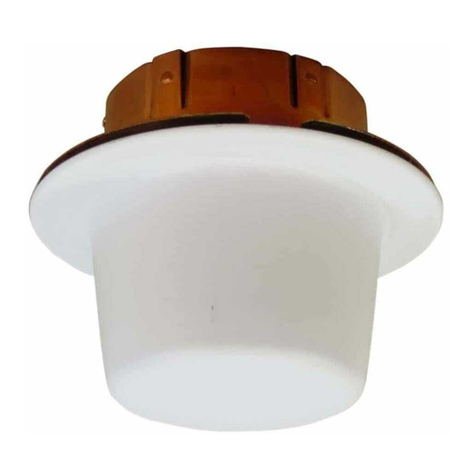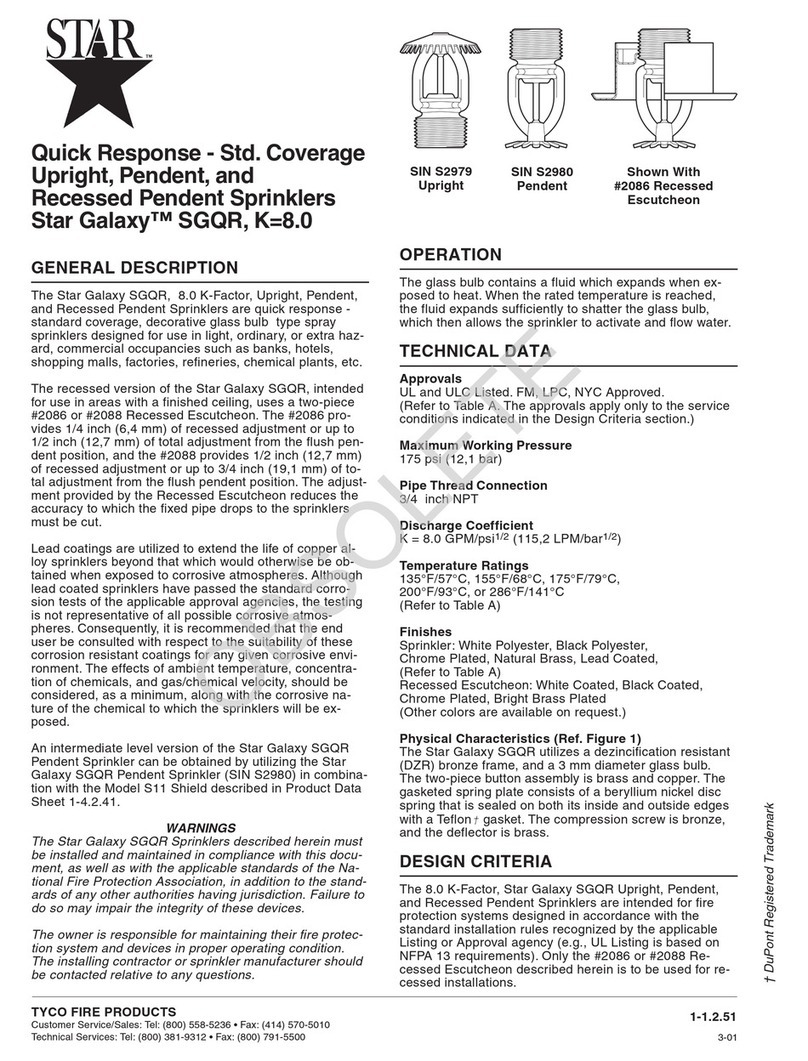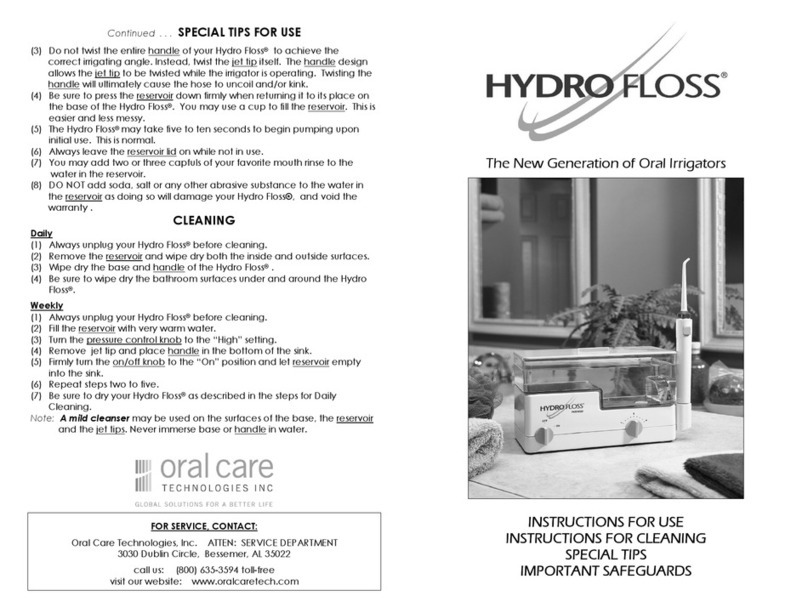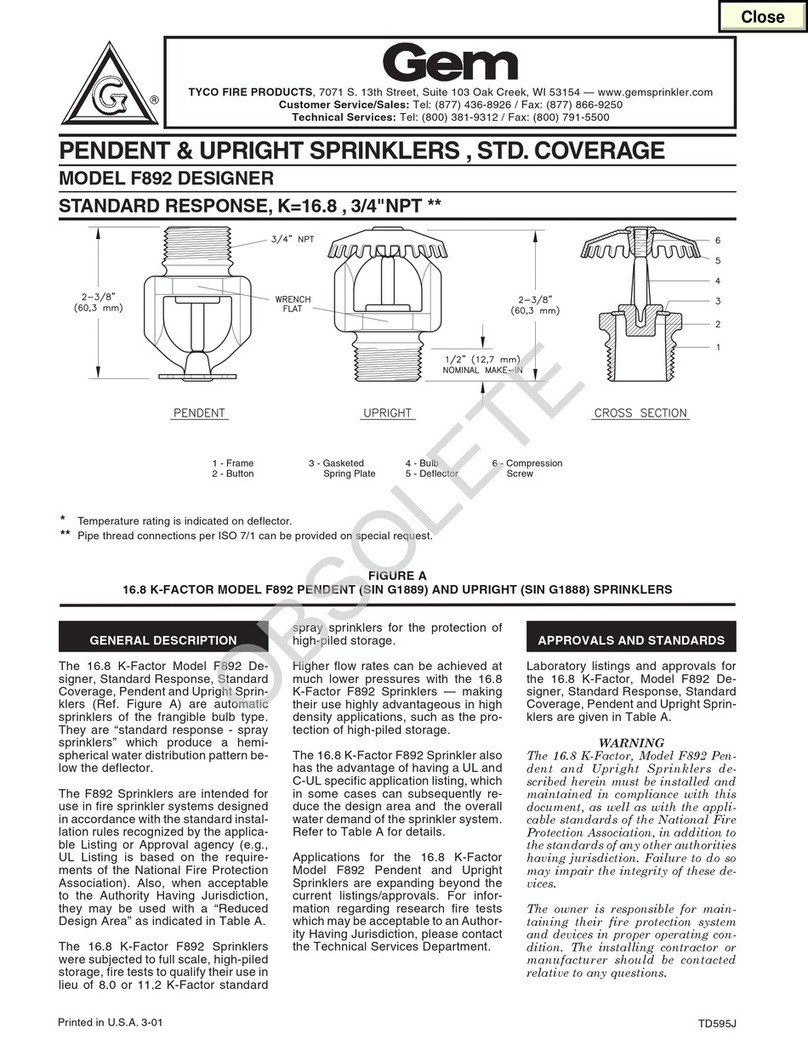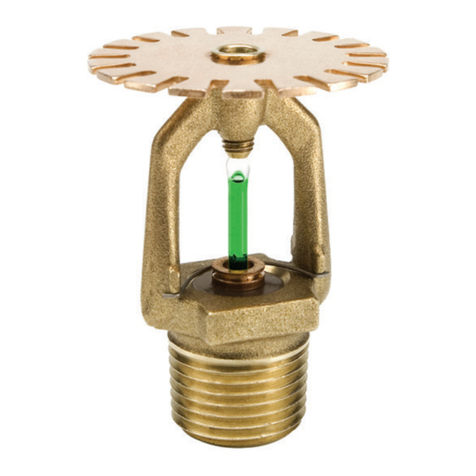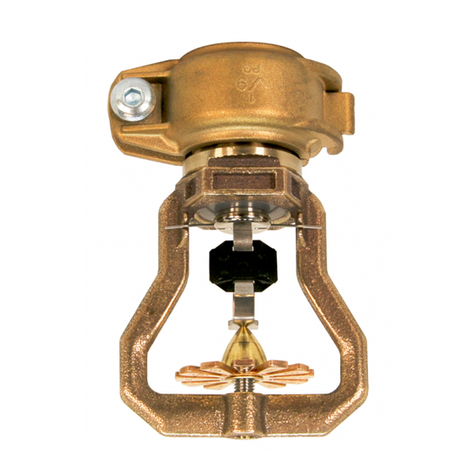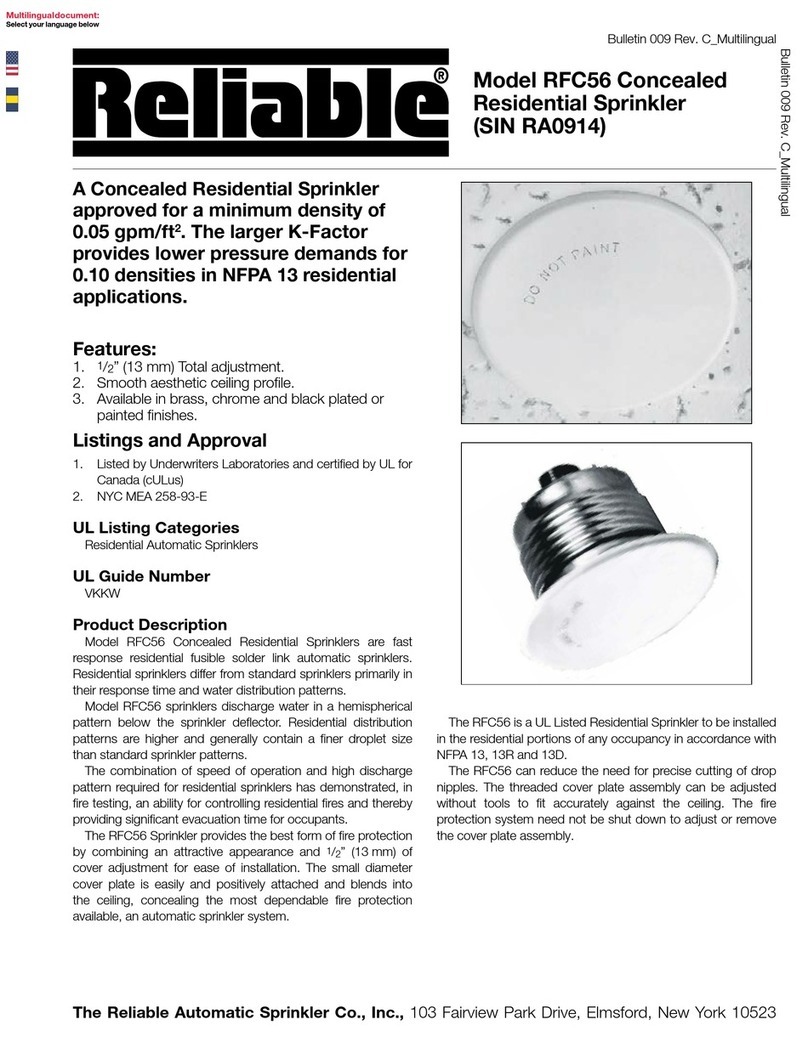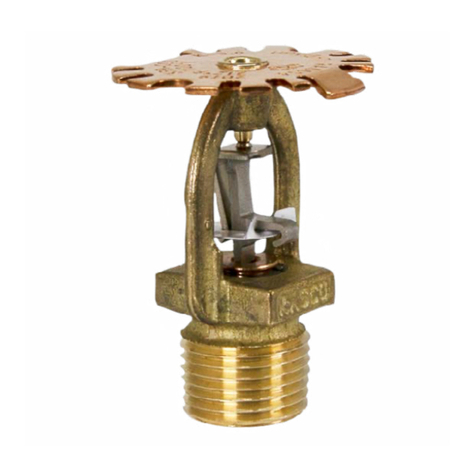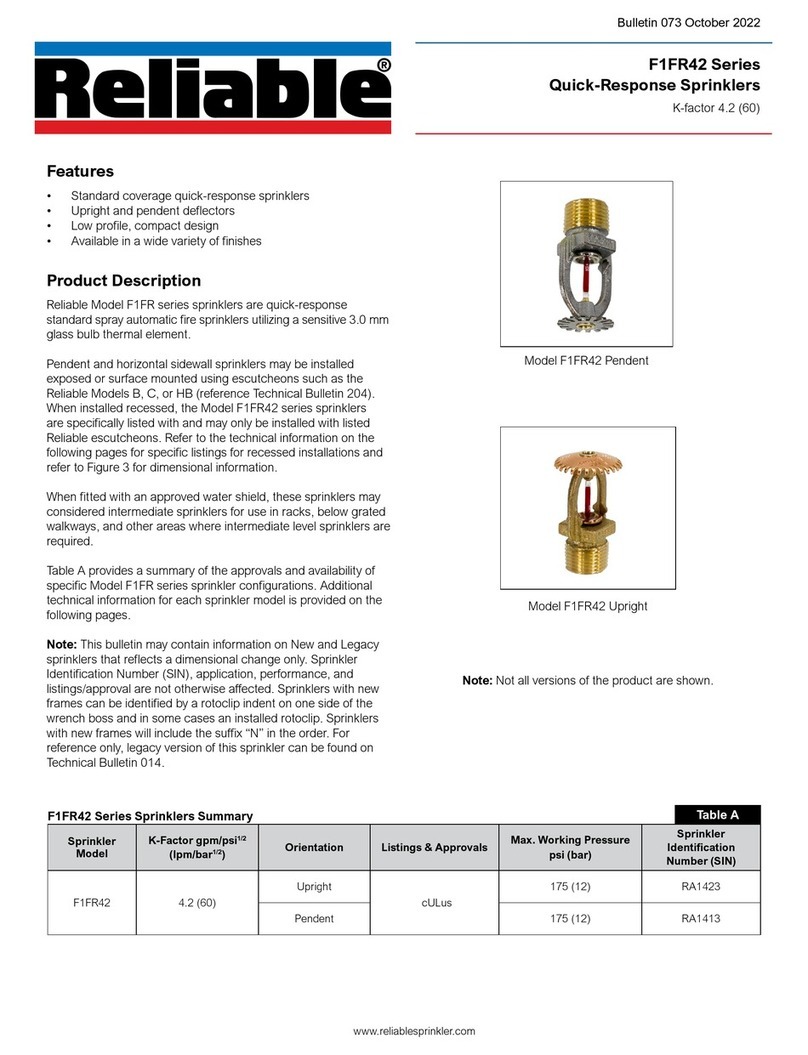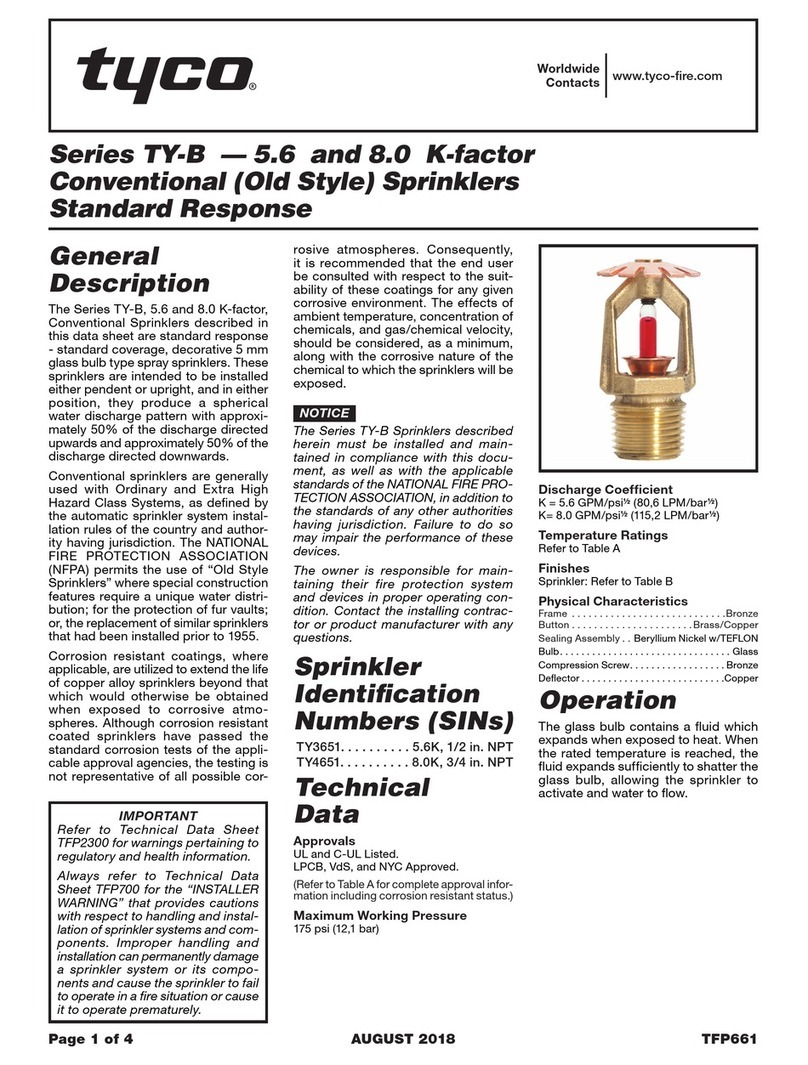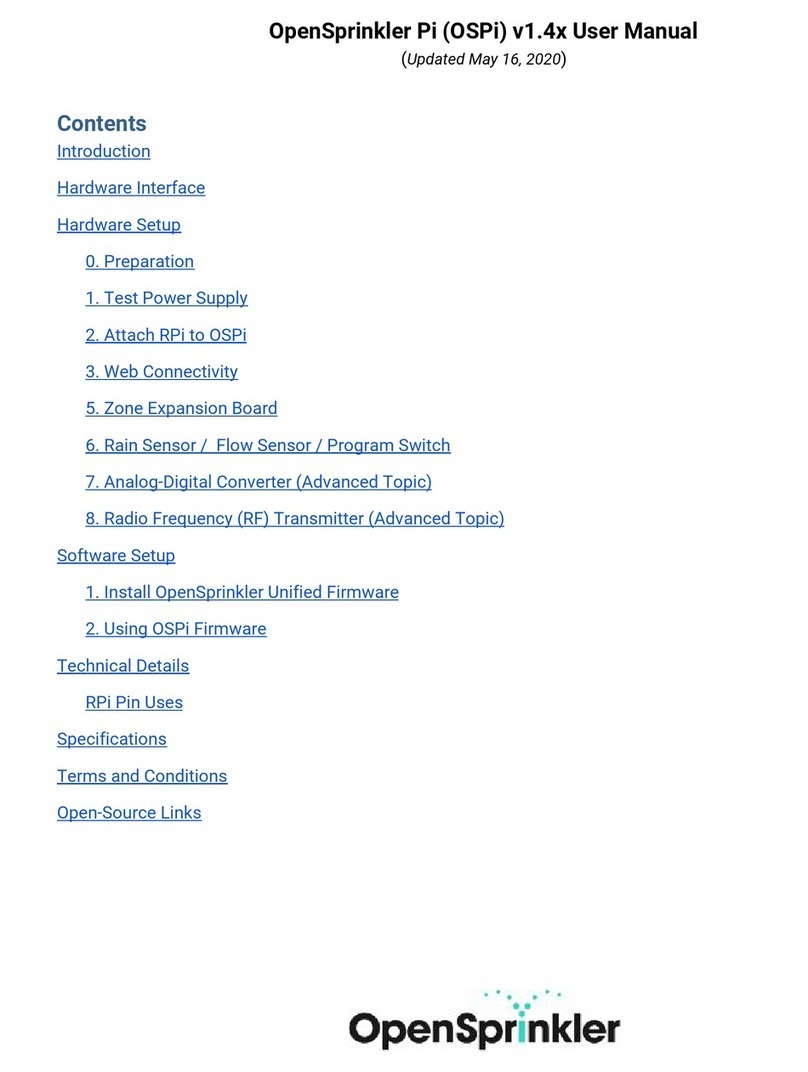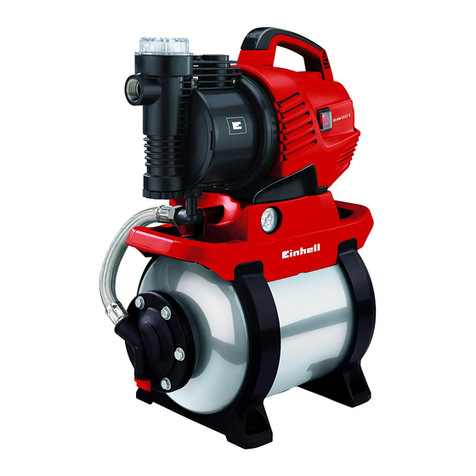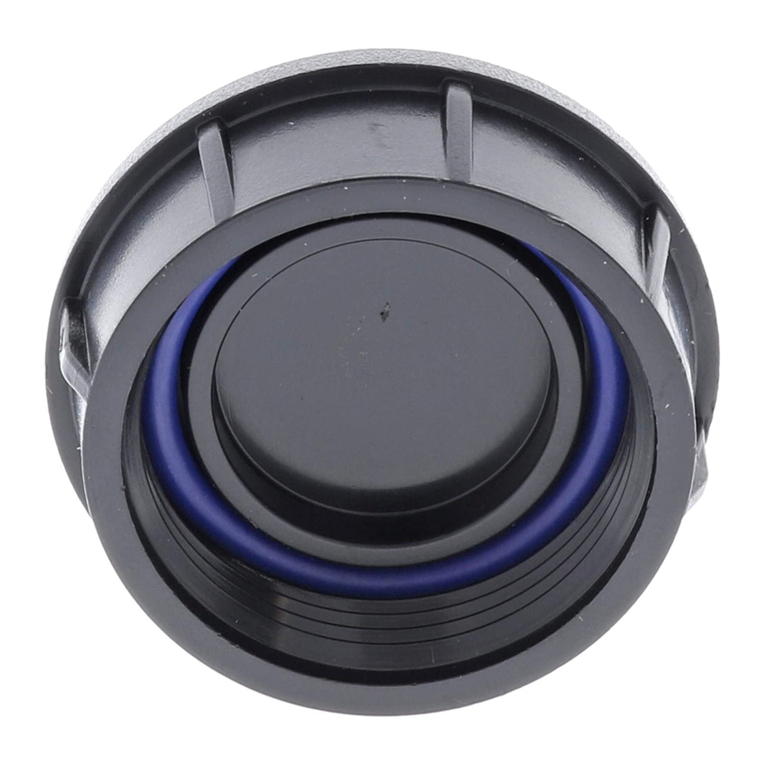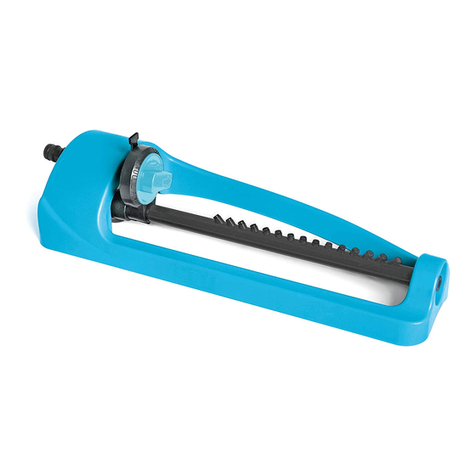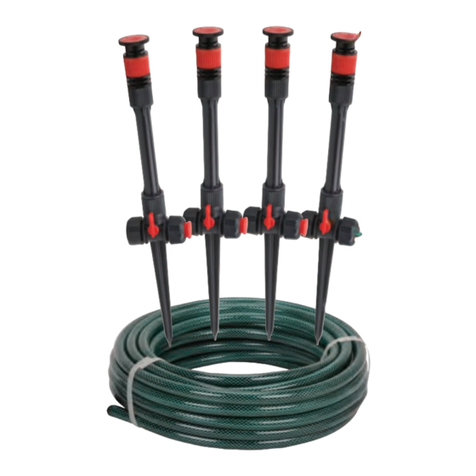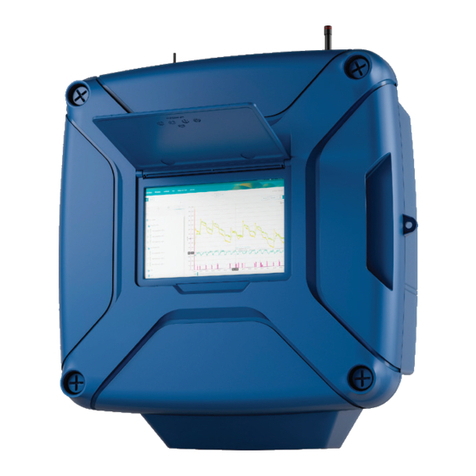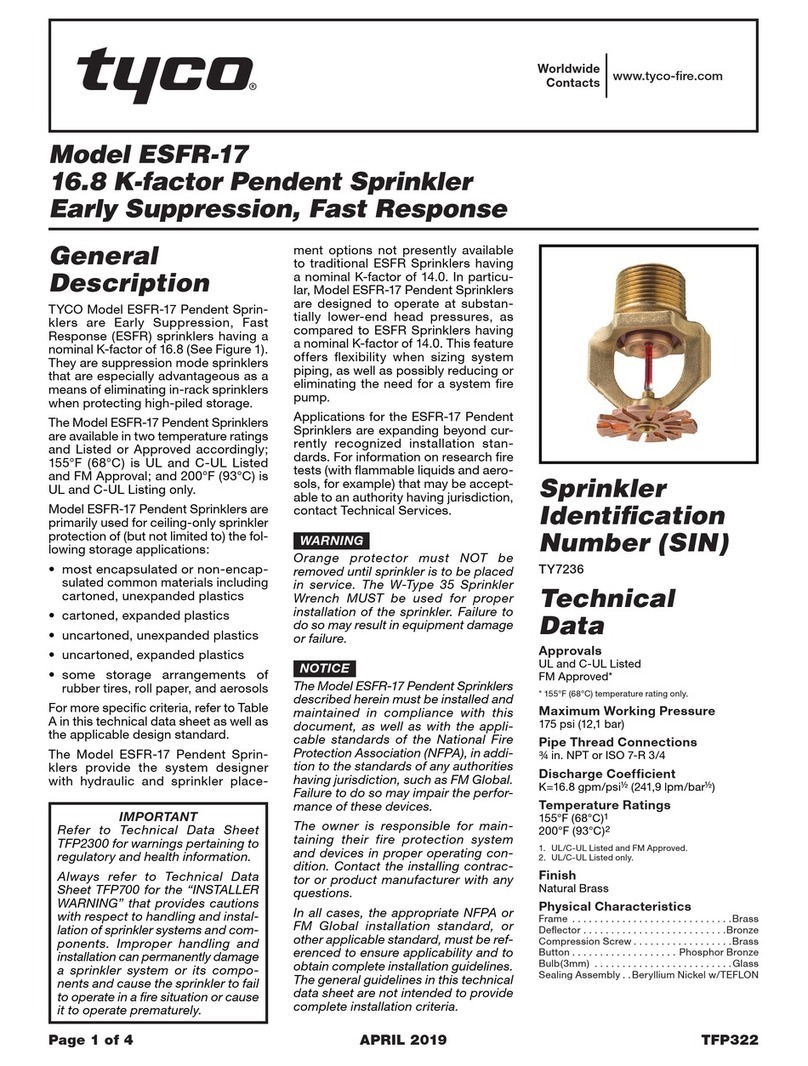
7.
Note:
In order for the solenoid valve to maintain Reliable’s war-
ranty it must remain sealed as it came from the factory. If
there are concerns about the valve’s internal components,
immediate replacement is recommended.
System Operation (Double Interlock)
To fully activate (water delivery to a fire) the Reliable Model
DDX Type F PrePaK in a double interlock application, a fire
detection device (smoke, heat, etc.) (two different detectors
with cross-zoned detection) must activate and the sprinkler
system’s piping must be purged of its supervisory air pres-
sure (i.e. from a discharged sprinkler head).
When the system is properly set for service, the water sup-
ply pressure simultaneously acts on both the underside of
the deluge valve’s clapper and on the valve’s push rod by
means of the pressurized push rod chamber. The resultant
pressure force acting on the push rod, in unison with the me-
chanical advantage of the deluge valve’s lever, is more than
sufficient to hold the valve’s clapper in the closed position
against the water supply pressure.
Energizing the releasing solenoid valve is only one of the
events required towards opening the deluge valve. Air
pressure in the sprinkler system must also be reduced to a
level low enough to activate the Model LP Dry Valve Actua-
tor. Both of these events allows the deluge valve’s push-
rod chamber to be vented to drain through its outlet. Since
the push-rod chamber’s pressure cannot be replenished
through its inlet restriction as rapidly as it is vented though
its outlet, the pressure falls rapidly. When the push-rod
chamber pressure drops below one-third of the water sup-
ply pressure, the opening force acting beneath the valve’s
clapper becomes greater than the push-rod force acting on
the lever. This causes the clapper to open. Refer to Reliable
Technical Bulletin 751 for further details.
Once the clapper has opened, the lever acts as a latch,
preventing the clapper from returning to the closed position.
Water from the supply flows through the deluge valve into
the system piping. Water also flows through the deluge valve
alarm outlet to activate any water flow alarm devices. Note
that the solenoid valve will be maintained open by the Pot-
ter Model PFC-4410-RC Releasing/Control Panel’s latching
feature until it is reset for operation.
After system shutdown and draining, the Model DDX Del-
uge Valve is easily reset without special tools (see Figs. 10,
11 or 12 depending on system size). Restore detection de-
vices by resetting or replacing any operated device. Once
detection devices are restored and the Potter Model PFC-
4410-RC Releasing/Control Panel is reset, water supply
pressure may be re-applied to the deluge valve.
Maintenance
The Model DDX Type F PrePaK and associated equip-
ment shall periodically be given a thorough inspection and
test. NFPA 25, Inspection, Testing and Maintenance of water
Based Fire Protection Systems, provides minimum mainte-
nance requirements. Systems should be tested, operated,
cleaned and inspected at least annually, and parts replaced
as required. Periodically open the air/condensate drain valve
(see Figs. 10, 11 or 12 depending on system size) beneath
the air tank to drain any condensate accumulation. Reliable
Technical Bulletin 751 provide information for maintaining
the Model DDX Deluge Valve. Potter Manual #5403550 pro-
vides information for maintaining the PFC-4410-RC Releas-
ing/Control Panel.
System Reset Procedure (All Sizes)
Refer to Figs. 10, 11 or 12 (depending on system size)
1. Close the main valve controlling water supply to the
Model DDX deluge valve. Also, close the two ¼” valves,
valves M (Rapid-Air Fill Shutoff Valve) and K (Regulated
Air Shutoff Valve).
2. Close the pushrod chamber supply valve, valve A.
3. Open the main drain valve, valve B, and drain the sys-
tem.
4. Open all drain valves and vents at low points through-
out the system, closing them when flow of water has
stopped. Open valve D. Note: The above steps accom-
plish the relieving of pressure in the pushrod chamber
of the deluge valve.
5. Open valve N. Push in the plunger of ball drip valve,
valve F, to force the ball from its seat, and drain any wa-
ter in the alarm line. Close valve N.
6. With the Model B Manual Emergency Station, valve D,
open, push in and rotate the deluge valve’s external
reset knob clockwise until you hear a distinct clicking
noise, indicating that the clapper has closed. Note:
The reset knob can be rotated only after pressure in the
pushrod chamber is reduced to atmospheric conditions
(0 psig).
7. Inspect and replace any portion of the sprinkler system
subjected to fire conditions. Press the system reset but-
ton on the Potter PFC-4410-RC Panel to place the sys-
tem in the ready condition. Note: All detection devices
must be reset before the panel can be reset.
8. Verify that the following valves are in their respective po-
sitions prior to continuing:
Valve A – closed, Valve B – open, Valve C – open, Valve
D – open, Valve E – closed, Valve G – open (if optional
air compressor is installed), Valve H – closed, Valve
J – open (if optional Nitrogen Kit is installed), Valve K
– closed, Valve M – closed, Valve N – closed, Valve
P – closed (if optional Model B1 Accelerator Kit is in-
stalled).
9. Open valve A and allow water to fill the deluge valve’s
pushrod chamber. Close valve D after any trapped air
has had a chance to escape from the deluge valve’s
pushrod chamber. Close the main drain, valve B.
10. Bleed any residual air that may be located between the
solenoid valve and the Model LP Dry Valve Actuator pip-
ing by energizing the solenoid valve. This is done by
opening the factory-installed manual pull station that is
assembled to the exterior of the PrePaK’s 24VDC Termi-
nal Box. Water should now be flowing freely through
the solenoid valve as well as the Model LP Dry Valve Ac-
tuator into the drip cup. Note: This venting of all trapped
air from this small location in the trim is very important to
ensure proper system operation and avoidance of false-
ly tripping the valve during an isolated electrical alarm.

